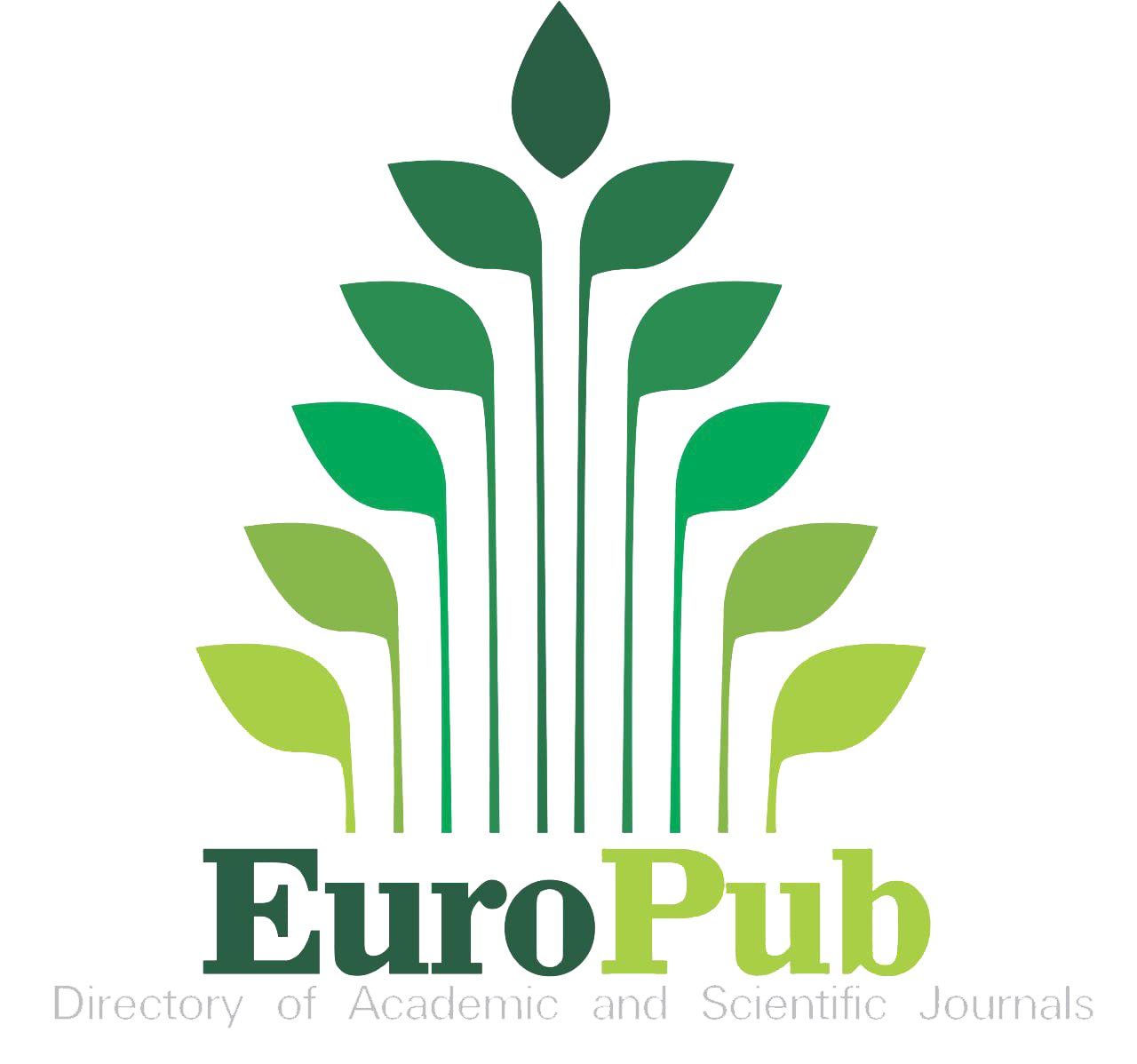Abstract
Background: Dermatophytes are humans' and animals' primary causative agents in charge of cutaneous fungal infections. Understanding the epidemic behavior of dermatophytosis, such as Tinea corporis, which specifically affects the trunk, neck, and extremities, might aid in its prevention. Aim of the study: The study aims to determine the proportion of Tinea corporis and dermatophytosis, the clinical type distribution of dermatophytosis, and participant demographics for Tinea corporis. Method: a cross-sectional study focuses on individuals diagnosed with Tinea corporis in the three general hospitals in Al-Najaf City the study takes place from April 1st to July 31st. all cases with tinea corporis are included during the period of the study. Results: In this study, 190 cases of all ages and genders were included. Dermatophytosis and Tinea corporis were found in 5.33% and 3.16% respectively among dermatology outpatient clinic attendants. Tinea corporis is the most frequent type of dermatophytosis (59.29%), while Tinea unguium is the lowest (2.06%). Females exhibit a significant association with Tinea pedis (p value= 0.002) and Tinea unguium (p value =0.009), whereas males demonstrate a significant association with Tinea cruris (p value = 0.021). The age groups 20-29 and 30-39 (20% for each), are more statically significant to affect with Tinea corporis while 60 years old or higher are the lowest (7.4%) and the mean±SD is 30.54 ± 16.77. The body mass index mean±SD of Tinea corporis study participants is 26.19 ± 6.49. 87.4% of the participants are urban area inhabitants. 63% of Tinea corporis patients are from low socioeconomic status Conclusion: Tinea corporis is the most prevalent clinical type of dermatophytosis. Females significantly demonstrate a higher prevalence of Tinea pedis and Tinea unguium compared to males. Conversely, Tinea cruris significantly exhibits a higher prevalence among males.
Keywords: Dermatology; Dermatophytosis; Tinea corporis.
Recommended Citation
Rasool, Ahmed Rashad; Kamil, Amel Mustafa; and Abbas, Dhakam Mohammed
(2024)
"An epidemiological study of tinea corporis in Al-Najaf city,"
Maaen Journal for Medical Sciences: Vol. 3
:
Iss.
3
, Article 1.
Available at: https://doi.org/10.55810/2789-9136.1048
References
References
[1] McGinnis MR, Tyring SK. Introduction to mycology. In: Medical microbiology. 4th ed. University of Texas Medical Branch at Galveston; 1996. p. 925-8. https://doi.org/ 10.1128/9781555817497.part6 [Internet] cited 2024 Apr 25] Available from: https://www.ncbi.nlm.nih.gov/books/ NBK8125/.
[2] Bitew A. Dermatophytosis: prevalence of dermatophytes and non-dermatophyte fungi from patients attending Arsho advanced medical laboratory, addis Ababa, Ethiopia. Dermatol Res Pract 2018:1-6. https://doi.org/10.1155/2018/ 8164757 (Article ID 8164757) Available from: https://www. ncbi.nlm.nih.gov/pmc/articles/PMC6192139/.
[3] Ahmad M, Nazir A, Khursheed S, Mir S, Shafi A. Dermatophytosis in patients referred for evaluation at a tertiary care teaching hospital in Kashmir, India. Int J Res Med Sci 2022;10(4):913. https://doi.org/10.18203/2320- 6012.ijrms20220985.
[4] Denk L. Tinea corporis. In: Pediatric clinical advisor. Elsevier; 2007. p. 562-3. https://doi.org/10.1016/B978-032303506- 4.10327-X. Available from: https://www.sciencedirect.com/ science/article/abs/pii/B978032303506410327X.
[5] Bhatia VK, Sharma PC. Epidemiological studies on dermatophytosis in human patients in Himachal Pradesh, India. SpringerPlus 2014;3(1):1-7. https://doi.org/10.1186/2193- 1801-3-134/TABLES/3. Available from: https://link.springer. com/articles/10.1186/2193-1801-3-134.
[6] Yee G, Al Aboud A. In: StatPearls [Internet]. Treasure Island (FL): StatPearls Publishing; 2023 Aug 8. Available from: https://www.ncbi.nlm.nih.gov/books/NBK544360/.
[7] Leung AKC, Lam JM, Leong KF, Hon KL. Tinea corporis: an updated review. Vol. 9, Drugs in context. Bioexcel Publishing LTD; 2020. https://doi.org/10.7573/dic.2020-5-6.
[8] Ely JW, Rosenfeld S, Stone MS. Diagnosis and management of tinea infections. Am Fam Physician 2014;90(10):702-10 [Internet] cited 2023 Dec 20] Available from: https:// pubmed.ncbi.nlm.nih.gov/25403034/.
[9] Al-Garawyi A, Al-Hamadani A, Waheed Al-Bederi A. Prevalence and incidence of dermatophytosis in Al-diwaniya city, Iraq. Indian J Forens Med Toxicol 2021;15(2):1813-7. https:// doi.org/10.37506/ijfmt.v15i2.14602.
[10] Bano S, Parveen K, Ahmed HB, Sial SA, Iqbal T, Detho AB. Dermatophytosis: an epidemiological study in a tertiary care center in rural Sind. J Pharmaceut Res Int 2021;28:123-8. https://doi.org/10.9734/JPRI/2021/v33i62A35159.
[11] Sacheli R, Cuypers L, Seidel L, Darfouf R, Adjetey C, Lagrou K, et al. Epidemiology of dermatophytes in Belgium a 5 Years' survey. Mycopathologia 2021 Jun 1;186(3):399-409. https://doi.org/10.1007/s11046-021-00542-4.
[12] Al-Khikani F. Dermatophytosis a worldwide contiguous fungal infection: growing challenge and few solutions. Biomed Biotechnol Res J 2020 Apr 1;4(2):117-22. https://doi.org/ 10.4103/bbrj.bbrj_1_20.
[13] Alshehri BA, Alamri AM, Rabaan AA, Al-Tawfiq JA. Epidemiology of dermatophytes isolated from clinical samples in a hospital in Eastern Saudi Arabia: a 20-year survey. J Epidemiol Global Health 2021 Dec 1;11(4):405-12. https:// doi.org/10.1007/s44197-021-00005-5.
[14] Salih AM, Ah A, Al -Sarray M. Practices regarding human papillomavirus and cervical cancer in A sample of paramedical staff in Al-Najaf governorate, Iraq. J Techn 2022; 4(special issue):45-51. https://doi.org/10.51173/jt.v4i33.613.
[15] Saadoon NB, Ali LH, Kadum SA. Knowledge and practices of HealthCare workers regarding of medical waste management in hospitals ofAlNajaf governorate. J Techn 2022; 4(special issue):64-72. https://doi.org/10.51173/jt.v4i33.633.
[16] Central Statistical Organization Iraq [Internet]. [cited 2023 Nov 18]. Available from: https://cosit.gov.iq/ar/?option¼com_ content&view¼article&layout¼edit&id¼1219.
[17] Majeed N, Ubaid A, Savore A, Al-Gburi J, Al-Haidarey M. The physical properties of Najaf province soils, Iraq. Ecology. Environ Conserv 2021;27(November Suppl. Issue):109-13. Available from: https://www.envirobiotechjournals.com/ EEC/v27novSuppl2021/EEC-15.pdf.
[18] Keys A, Fidanza F,KarvonenMJ, Kimura N, TaylorHL. Indices of relative weight and obesity. J Chron Dis 1972;25:329-43.
[19] Omer W, Al-Hadithi T. Developing a socioeconomic index for health research in Iraq. East Mediterr Health J 2017; 23(10):670-7. https://doi.org/10.26719/2017.23.10.670.
[20] Ahmed Mahdi Habeeb, Al-Sarray Atta Ah Mousa, Ali Hussein Al Hafidh, Barrak Rafah Sabah, Brahim Afraa. Assessment of vitamin D3 level among a sample of type 2 diabetic patients attending diabetes and endocrinology center in Al-hilla city. J Techn 2023;5(3):207-12. https:// doi.org/10.51173/jt.v5i3.1452.
[21] Kaur I, ChaudharyA, Singh H. Clinico-microbiological aspects of tinea corporis in North India: emergence of Trichophyton tonsurans. Int J Res Dermatol 2019;5(1):144. https://doi.org/ 10.18203/issn.2455-4529.intjresdermatol20190234.
[22] Lafta R, Alobaidi H. Commonest skin infections in two dermatology outpatient clinics in Baghdad city. Iraqi J Commun Med 2017;30(1):29-32.
[23] Bilgili ME, Yildiz H, Sarici G. Prevalence of skin diseases in a dermatology outpatient clinic in Turkey. A cross-sectional, retrospective study. J Dermatol Case Rep 2013;7(4):108-12. https://doi.org/10.3315/jdcr.2013.1156.
[24] Abdulkareem HA, Khalaf HY, Mohammed BL. Epidimological study of dermatophytes infection in Kirkuk city. Ann Roman Soc Cell Biol 2022;26(1):343-52. Available from: https://www.annalsofrscb.ro/index.php/journal/article/view/ 10781.
[25] Kadhim O. The incidence of dermatophytosis in Babylon province, Iraq. Med J Babylon 2018;15(3):234-7. https:// doi.org/10.4103/MJBL.MJBL_76_18.
[26] Al-Hmadani A, Al-Dhalimi M, Alrufae M. Epidemiologic study of Dermatophytosis in Al-Najaf government. Magazin of Al-Kufa Univ Biol 2014;6(1). Available from, http://www. uokufa.edu.iq/journals/index.php/ajb/index/http://iasj.net/ iasj?func¼issues&jId¼129&uiLanguage¼en.
[27] Ebrahimi M, Zarrinfar H, Naseri A, Najafzadeh MJ, Fata A, Parian M, et al. Epidemiology of dermatophytosis in northeastern Iran; A subtropical region. Curr Med Mycol 2019; 5(2):16-21. https://doi.org/10.18502/cmm.5.2.1156.
[28] Bontems O, Fratti M, Salamin K, Guenova E, Monod M. Epidemiology of dermatophytoses in Switzerland according to a survey of dermatophytes isolated in Lausanne between 2001 and 2018. J Fungi 2020;6(2):1-8. https://doi.org/10.3390/ jof6020095.
[29] Abed Ali FAH, Al-Janabi JKA, Alhattab MK. Prevalence of dermatophyte fungal infection in Hillah, Iraq. Int J Chem- Tech Res 2017;10(6):827-37. Available from: https://www. researchgate.net/publication/318502377.
[30] Araya S, Tesfaye B, Fente D. Epidemiology of dermatophyte and non-dermatophyte fungi infection in Ethiopia. Clin Cosmet Invest Dermatol 2020;13:291-7. https://doi.org/ 10.2147/CCID.S246183.
[31] Turky NM, Al-janabi AOF, Hassan AS. MRSA association with Tinea corporis in Al-Anbar governorate/west of Iraq. HIV Nurs 2023;23(1):1000-4. Available from: 1031838/ hiv23.01.169, https://hivnursing.net/index.php/hiv/article/ view/1235.
















Indexed in: